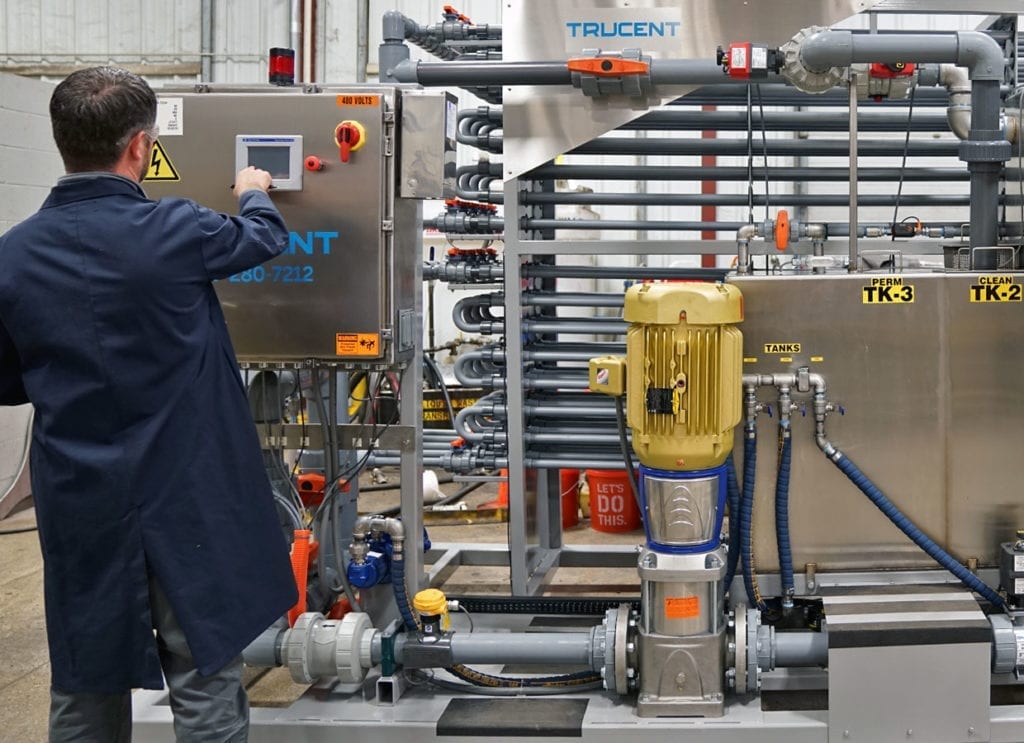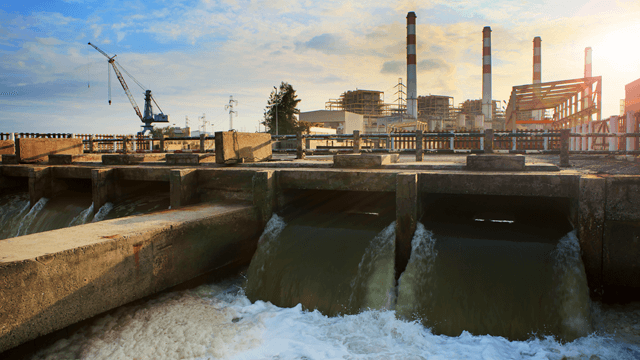Innovations and Advancements in Industrial Waste Water Therapy Technologies
The landscape of industrial wastewater treatment is going through a transformative change, driven by innovations that enhance both effectiveness and sustainability. As regulatory requirements progress, the assimilation of AI and machine knowing right into wastewater monitoring systems guarantees to simplify procedures and make certain conformity.
Summary of Drainage Treatment Technologies
Wastewater treatment technologies incorporate a range of techniques created to remove pollutants from industrial effluents before their release into the environment. These technologies are crucial for preserving environmental balance and making certain conformity with environmental laws. The main categories of wastewater treatment consist of physical, chemical, and organic approaches, each offering unique functions based upon the nature of the impurities existing.

Organic therapy techniques employ microbes to weaken raw material, making them especially reliable for organic-rich effluents. Methods like triggered sludge and biofilm activators harness the natural destruction capacities of germs, bring about considerable reductions in biochemical oxygen demand (BOD)
Advanced Filtration Techniques
Advanced filtering methods stand for a vital evolution in the realm of industrial wastewater therapy, improving the effectiveness of contaminant removal processes. Industrial Waste Water Treatment. These techniques incorporate an array of innovations, including microfiltration, ultrafiltration, nanofiltration, and reverse osmosis, which give consecutive obstacles for numerous particle sizes and chemical frameworks
Microfiltration and ultrafiltration utilize membrane layer systems to get rid of suspended solids, bacteria, and larger organic molecules, boosting the quality of effluent before additional treatment. Nanofiltration connects the void between ultrafiltration and turn around osmosis, effectively getting rid of organic substances and divalent ions, thus minimizing the load on downstream procedures.
Reverse osmosis offers the highest degree of purification by enabling just water and tiny molecules to pass with its semi-permeable membrane layers, making it suitable for reclaiming top notch water from industrial effluents. Current developments in membrane layer innovation, including the development of more fouling-resistant and durable materials, have actually significantly boosted operational effectiveness and decreased expenses.
Integrating these innovative filtering techniques not only boosts the total therapy procedure however also contributes to sustainability initiatives by making it possible for water reuse and source healing in industrial settings. (Industrial Waste Water Treatment)
Biological Therapy Advancements

Additionally, the development of engineered organic systems, such as membrane bioreactors (MBRs), integrates organic therapy with advanced membrane layer filtering. This integration enables greater effluent high quality and decreased footprint, making it ideal for space-constrained commercial centers. Advancements in genetically crafted microbes have also emerged, enhancing the biodegradation of details impurities, such as drugs and hefty steels, that are typically challenging to get rid of.
Furthermore, the application of bioaugmentation strategies, where beneficial microorganisms are presented to improve the existing organic therapy procedures, has revealed encouraging lead to boosting therapy performance. These advancements collectively represent a trend in the direction of more lasting and effective biological treatment methods that can adapt to the developing complexities of commercial wastewater streams. As industries remain to focus on environmental next page conformity, these biological developments will play a vital function in wastewater management.

Source Healing Approaches
In industrial setups, the assimilation of source recuperation methods has actually become significantly vital for boosting sustainability and decreasing waste. These techniques concentrate on removing important materials and energy from wastewater streams, therefore changing possible pollutants right into reusable sources.
One prominent strategy is vitamins and mineral healing, where nitrogen and phosphorus, often existing in excess in wastewater, are captured and exchanged fertilizers. This not just decreases ecological effects however likewise supplies a round economic climate option for agricultural applications. Furthermore, modern technologies such as anaerobic digestion enable for the conversion of organic waste into biogas, a renewable power source that can counter nonrenewable fuel source use in industrial operations.
In addition, progressed filtering and membrane technologies facilitate the recovery of industrial spin-offs such as salts and metals. These recuperated products can be rehabilitated right into production processes, reducing the need for virgin sources.
Future Patterns in Drainage Monitoring
As industries increasingly focus on sustainability, the future of wastewater monitoring is readied to undergo significant changes. Technical innovations, such as man-made intelligence and device understanding, will certainly allow a lot more efficient monitoring and monitoring of wastewater systems. These technologies can forecast maintenance needs, enhance treatment procedures, and boost decision-making, inevitably lowering operational costs and ecological influence.
In addition, the combination of round economic climate principles will certainly play a crucial role in wastewater monitoring. Industries are anticipated to Learn More Here move in the direction of systems that not just deal with wastewater but likewise recuperate useful sources, such as nutrients, water, and power. This change will minimize waste and advertise the reuse of products, straightening with international sustainability goals.
Emerging therapy methods, such as membrane layer bioreactors and progressed oxidation processes, will additionally enhance the effectiveness of wastewater treatment, permitting greater high quality effluents appropriate for reuse. Additionally, governing frameworks are most likely to advance, emphasizing stricter standards for wastewater discharge and encouraging industries to adopt cutting-edge treatment options.
Conclusion
In conclusion, the advancement of industrial wastewater treatment technologies demonstrates a significant change in the direction of improved performance and sustainability (Industrial Waste Water Treatment). Developments in advanced filtration strategies, biological treatments, and resource healing approaches highlight the market's commitment to environmental stewardship.
The landscape of commercial wastewater treatment is undergoing a transformative change, driven by developments that enhance both performance and sustainability.Wastewater treatment technologies incorporate a range of methods made to eliminate impurities from industrial effluents prior to their launch right into the atmosphere.Using the power of organic processes has actually led to over here substantial advancements in the treatment of industrial wastewater.Additionally, the application of bioaugmentation techniques, where helpful microbes are presented to improve the existing biological therapy processes, has shown appealing outcomes in boosting therapy efficiency. These developments jointly signify a pattern in the direction of more lasting and efficient organic therapy methods that can adjust to the advancing complexities of commercial wastewater streams.